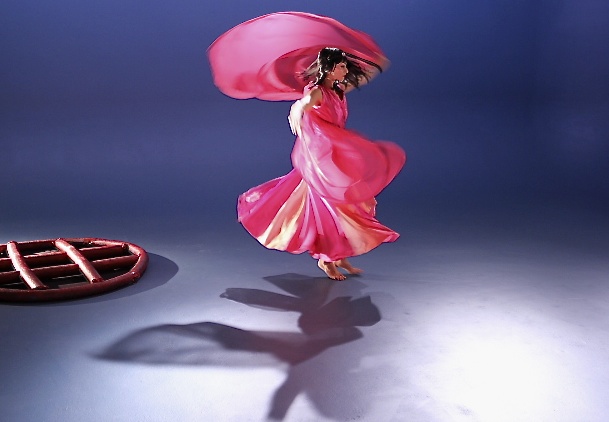Few works in the standard repertory are more shocking than Oscar Wilde’s play Salome and Richard Strauss’s operatic version: both have been condemned by audiences and authorities throughout their hundred-year histories.
Table Top Opera has adapted the opera for a mixed ensemble of jazz and classical instruments and paired the music with comicbook illustrations by P. Craig Russell. The story is told through the pictures projected above the musicians during the performance.
Below is a condensed version of the narrative in the form of a slide show utilizing panels from the comicbook.
The Veils of Salomé
“The Veils of Salomé” will bring together, at the University of Rochester, a distinguished group of scholars and performers to present and discuss images of Salomé as a focus for the study of intersections between religion, the arts, and gender over the centuries. The most famous and influential depictions of Salomé are those by Oscar Wilde in his play of the same name, illustrated by Aubrey Beardsley (1896), and its subsequent operatic adaptation by Richard Strauss (1905), which featured the “Dance of the Seven Veils.” These works raised a number of aesthetic and social issues, particularly regarding views of women and gender; such issues were further addressed in subsequent theater and film adaptations, dance performances, and scores of drawings and paintings, from those by Munch, Picasso, and Klimt, to the book illustrations of John Vassos, and, more recently, the graphic novel of the opera by comic-book artist P. Craig Russell (2004).
The production aims to explore these shifting images of Salomé with a symposium, exhibitions, a movie showing, and performances of the Strauss opera. The symposium will draw from various departments and disciplines scholars who will discuss and analyze Salomé from multiple perspectives including religion, society, literature, the visual arts, dance, music, and women and gender studies. For example, Anne Merideth and Aaron Hughes will analyze and discuss the earliest appearance Salomé in Jewish and New Testament sources. Michael Anderson will present his work on John the Baptist in early western music, accompanied by a performance by Eastman students of several liturgical chants that focus on Salomé. Grace Seiberling will look at images of Salomé in western art, while Emil Homerin will interview P. Craig Russell regarding his influences and interpretation of the opera. Other participants will contextualize Salomé in terms of trends in French literature at the fin de siècle and further ramifications of the opera and its dance on women and gender studies.
In addition to the symposium, Bruce Barnes, director of George Eastman House is planning to screen at the Dryden Theater some of the earliest film versions of Salomé to be shown around the time of the symposium and performances, tentatively scheduled for October 8-10, 2014. Furthermore, we hope to have an exhibition on the River Campus of images of Salomé, including photographs and movie posters in the George Eastman House collection, along with more recent work by the comic book artist P. Craig Russell, whose graphic novel of the opera Salomé will serve as the backdrop for two performances of the opera by Table Top Opera.
Salome Official Trailer (Music by KSM).
Few genres have blossomed more over the past decades than the comic book. Through the sequential use of images and words, comic books have emerged as one of the most potent means of telling stories. Their impact has been enormous. It is now possible to find comic-book versions of everything from pulp fiction to great literature, children’s stories to opera, and legal briefs to primers on the theories of evolution and relativity. They have even spawned several box-office successes. As comic books have flourished, so they have also embraced new technologies. Today’s comic books look and feel quite different from those of yesteryear: in place of pen and ink, modern comic-book artists often rely on computer screens and a mouse; in place of newsprint and the corner store, modern comic-book publishers turn to tablets and the internet. On-line comics even animate the images, thereby creating so-called motion comics.
Table Top Opera extends these ideas by combining the extraordinary narrative power of comic books, the technological resources of modern computers, and the emotional impact of live music to stage bold new versions of operatic masterpieces. These productions involve projecting each frame of the comic book sequentially onto a large movie screen: some of them are presented in their original form and some are set in motion by zooms, pans, scrolls, fades, and other video techniques. The images are accompanied by new arrangements of the music for a chamber ensemble. To ensure that the pictures align with the music, they are triggered in real time using sophisticated computer software. The experience is also brought to life by specially composed electronic sounds and evocative sets and lighting effects.
At a time when operatic productions are becoming increasingly expensive and when they are failing to attract younger audiences, Table Top Opera’s presentations of Salomé provide a cost-effective way to present a great opera to the Rochester community. Gone are the elaborate sets and costumes, large backstage crews, and long periods of preparation. These are all replaced by a screen, a projector, a computer, a sound system, and a small band of musicians. The set up is sufficiently flexible that each project can be performed in a wide array of spaces, everything from small recital halls to large theaters. From an artistic perspective, Table Top Opera also redefines the intimate connections between words, images, and sounds, and challenges the traditional distinctions between high and low art. By combining opera with comic books and classical players with jazz musicians, these performances not only enable listeners to experience the music in a radically different way, but they also encourage the audience to take another look at the opera Salomé and its characters in their original form as presented in the symposium.
Th. Emil Homerin, Professor of Religion, University of Rochester



























Princess Salome attends a celebration at the palace along with her mother Herodias and stepfather Herod. She is a virginal sixteen year old girl not yet corrupted by the political and religious intrigue of the Judean province.